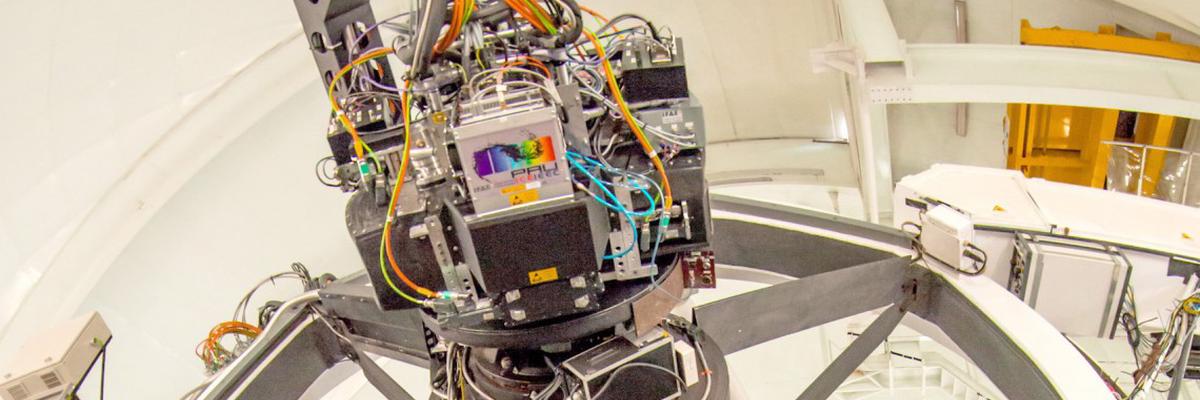Highlight
The PAU camera is now fully commissioned and ready to be offered as a visitor instrument
April 28, 2016

The PAU Camera saw first light in June 2015 and has successfully completed two observation periods in November 2015 and April 2016, starting its Science Survey programme. Over 5000 science exposures have been taken, covering about 1.5 deg2 of the sky using the full set of 40 narrow band filters and up to 5 deg2 with a subset of them. This area is equivalent to about 500 deg2 area with single band and single exposures taken in 9 nights of good weather. The current PAU dataset has been reduced, calibrated and matched to deeper overlapping samples in about 1 day of real time. The result is about 75000 complete PAU low resolution spectra to iAB<23mag. The data reduction resulted in over 5 Terabytes and 71 million object measurements and was performed in record time using the PIC infrastructure and a preliminary PAUcam community pipeline. The figure shows an example comparison of some PAU calibrated spectra (taken in April 2016) with public galaxy and star SDSS spectra, with no adjustments.
The PAU Survey aims to cover 100 deg2 providing spectral information in fields where deep weak gravitational lensing data are available. This will result in new spectra for several million galaxies up to iAB<23 mag. Other science studies can be done with this camera which has the capability to determining SED for all objects in a large field of view.
PAUcam can also be used for Broad Band imaging with ugrizY on 18 4Kx2K red-sensitive fully depleted CCD’s of 15 μm with a ~1 deg2 FoV (with vignetting outside the central 40 arcmin diameter).
The PAUcam system has also evolved to become more user friendly and able to be operated by other astronomers from the ING community. With the commissioning of the Autoguider at the beginning of April 2016 the camera is now fully commissioned.
Detailed information on the camera performance and how to prepare for observation periods with PAUCam can be found at pausurvery.org .
- Additional Material
- PAU Survey Website
- IFAE Research group
- Observational Cosmology Group
- Contact
